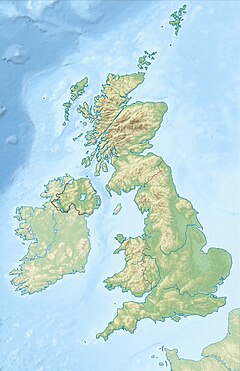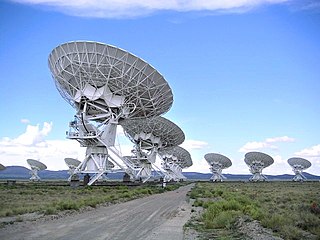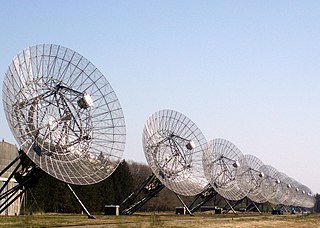This article does not cite any sources .(October 2015) (Learn how and when to remove this template message) |
| Location(s) | United Kingdom |
|---|---|
| Coordinates | 52°13′N0°06′E / 52.21°N 0.1°E Coordinates: 52°13′N0°06′E / 52.21°N 0.1°E |
| Organization | University of Cambridge |
| Wavelength | 81.5, 159 MHz (3.68, 1.89 m) |
| Telescope style | radio interferometer |
The Cambridge Interferometer was a radio telescope interferometer built by Martin Ryle and Antony Hewish in the early 1950s to the west of Cambridge (between the Grange Road football ground and the current Cavendish Laboratory). The interferometer consisted of an array of 4 fixed elements to survey the sky. It produced the two Cambridge catalogues of radio sources (the 2C catalogue of radio sources at 81.5 MHz, and the 3C catalogue of radio sources at 159 MHz, building on the work of the Preliminary survey of the radio stars in the Northern Hemisphere at 45 MHz - 214 MHz using the 2-element Long Michelson Interferometer), discovering some of the most interesting astronomical objects known. The telescope was operated by the Radio Astronomy Group of Cambridge University.

A radio telescope is a specialized antenna and radio receiver used to receive radio waves from astronomical radio sources in the sky in radio astronomy. Radio telescopes are the main observing instrument used in radio astronomy, which studies the radio frequency portion of the electromagnetic spectrum emitted by astronomical objects, just as optical telescopes are the main observing instrument used in traditional optical astronomy which studies the light wave portion of the spectrum coming from astronomical objects. Radio telescopes are typically large parabolic ("dish") antennas similar to those employed in tracking and communicating with satellites and space probes. They may be used singly or linked together electronically in an array. Unlike optical telescopes, radio telescopes can be used in the daytime as well as at night. Since astronomical radio sources such as planets, stars, nebulas and galaxies are very far away, the radio waves coming from them are extremely weak, so radio telescopes require very large antennas to collect enough radio energy to study them, and extremely sensitive receiving equipment. Radio observatories are preferentially located far from major centers of population to avoid electromagnetic interference (EMI) from radio, television, radar, motor vehicles, and other manmade electronic devices.
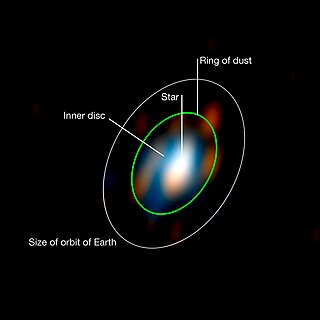
An astronomical interferometer is an array of separate telescopes, mirror segments, or radio telescope antennas that work together as a single telescope to provide higher resolution images of astronomical objects such as stars, nebulas and galaxies by means of interferometry. The advantage of this technique is that it can theoretically produce images with the angular resolution of a huge telescope with an aperture equal to the separation between the component telescopes. The main drawback is that it does not collect as much light as the complete instrument's mirror. Thus it is mainly useful for fine resolution of more luminous astronomical objects, such as close binary stars. Another drawback is that the maximum angular size of a detectable emission source is limited by the minimum gap between detectors in the collector array.
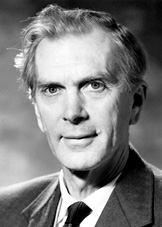
Sir Martin Ryle was an English radio astronomer who developed revolutionary radio telescope systems and used them for accurate location and imaging of weak radio sources. In 1946 Ryle and Derek Vonberg were the first people to publish interferometric astronomical measurements at radio wavelengths. With improved equipment, Ryle observed the most distant known galaxies in the universe at that time. He was the first Professor of Radio Astronomy at the University of Cambridge, and founding director of the Mullard Radio Astronomy Observatory. He was Astronomer Royal from 1972 to 1982. Ryle and Antony Hewish shared the Nobel Prize for Physics in 1974, the first Nobel prize awarded in recognition of astronomical research. In the 1970s, Ryle turned the greater part of his attention from astronomy to social and political issues which he considered to be more urgent.
Martin Ryle and Antony Hewish received the Nobel Prize for Physics in 1974 for this and other related work.
Antony Hewish is a British radio astronomer who won the Nobel Prize for Physics in 1974 for his role in the discovery of pulsars. He was also awarded the Eddington Medal of the Royal Astronomical Society in 1969.
